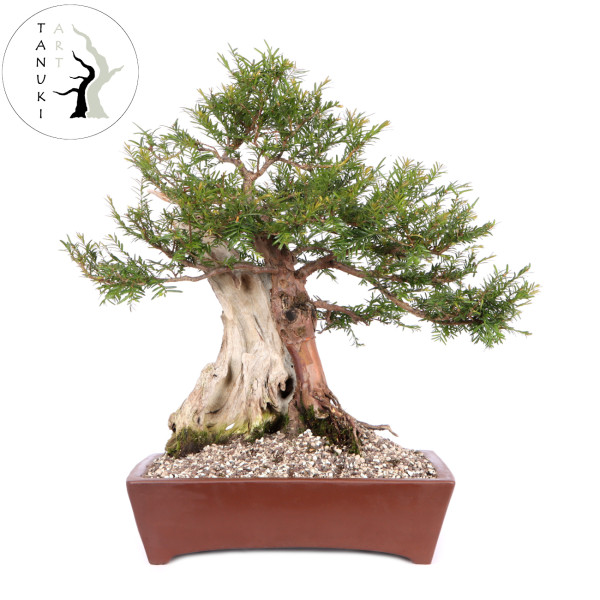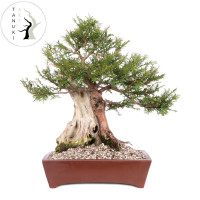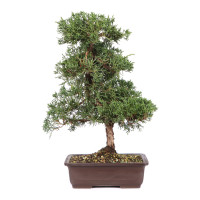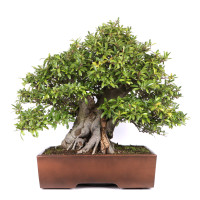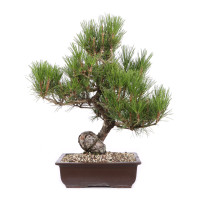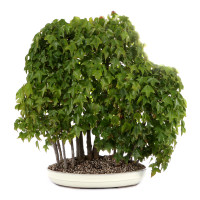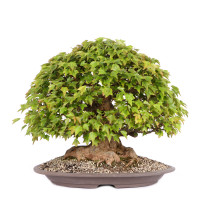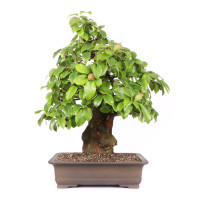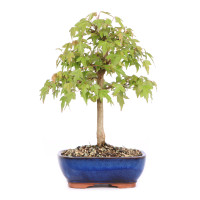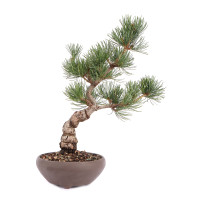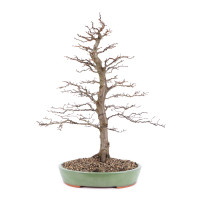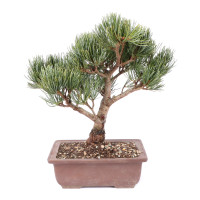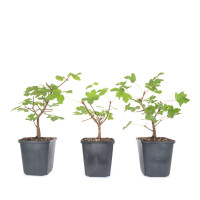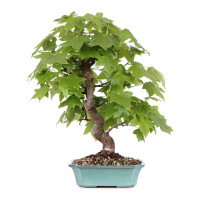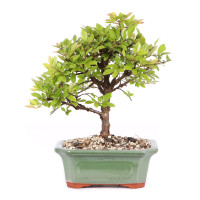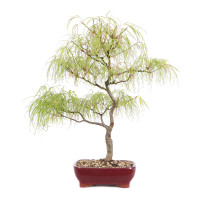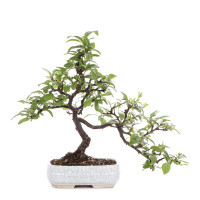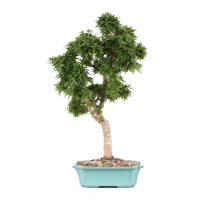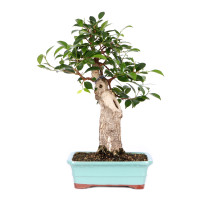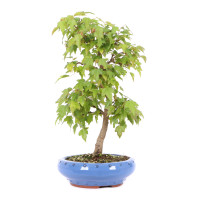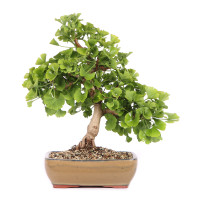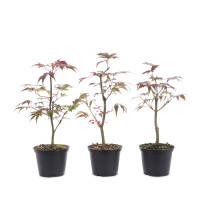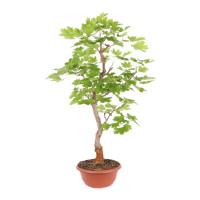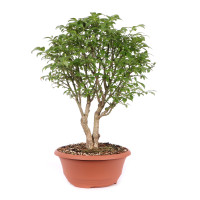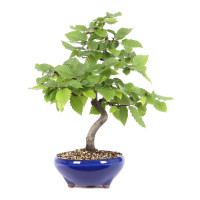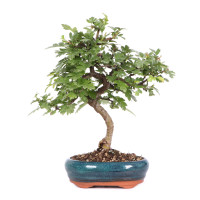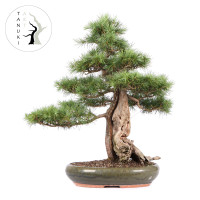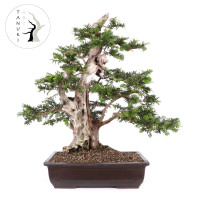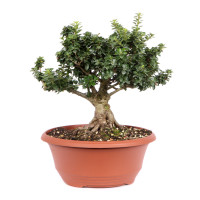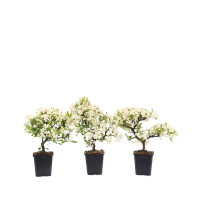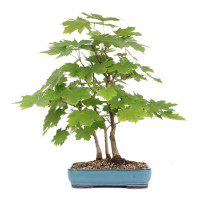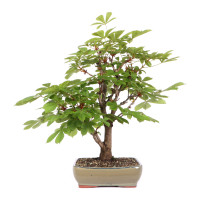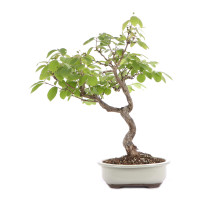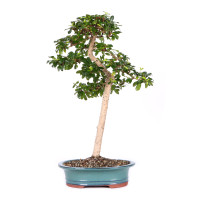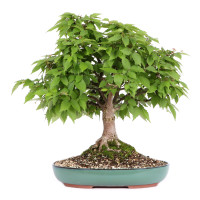- Order number: 1110-KT-24-1723
- Addtion: Tanuki
- Height: 50 cm (incl. pot)
- Foliage: evergreen
- Bonsai Pot: ceramic pot
- Year: 2011
- Origin: Germany
Taxus baccata - Common Yew
General:
The common yew is widespread throughout Europe, North Africa and as far as northern Persia. It already occurred in the Middle Tertiary (over 20 million years ago!) And is therefore the oldest conifer in Europe. In Germany, however, it is threatened today and is on the red list of endangered species. Its natural location is the forest, where it grows as an extremely shade-tolerant species, mostly shrub-like and with a height of 10-15 meters. The bark is gray-brown and later partially dissolves into scales. This often creates a very interesting mosaic of different shades of red. The needles are evergreen, brownish in autumn, and female plants have striking red fruits. Except for this red pulp, all parts of the plant are poisonous! The yew tree is very robust and tolerant of soil and weather conditions.
Care as a bonsai:
Due to its robustness, its strong throwing power (also from the old wood) and the fine foliage, the yew tree offers many possibilities for bonsai cultivation. However, you should wire it in good time when the branches are still young. Later on they become very hard and inflexible. Yew trees can grow in the shade as well as in the sun. The only important thing is appropriate irrigation, whereby waterlogging must be avoided at all costs! During the growing season, the long shoots are shortened by plucking. As with almost all conifers, late summer / autumn is the best time for root pruning and repotting. When milling wood, you should definitely use a respirator due to the toxicity!
About Tanuki:
A special technique for quickly obtaining expressive and very old-looking bonsai is to "marry" a plant to a dead piece of wood. This usually involves joining long grown plant material to a nicely shaped piece of wood. The plant and the wood are sometimes intricately worked and over time become fused into a single unit. The artistic connection often resembles very old specimens collected in nature (Yamadori) and often looks deceptively real.
Bonsai created by this technique are called "Tanuki" in Japan. The name "Tanuki" also stands for the native "tanuki", which appears in mythology as a mythical creature. In the legends he appears as a cunning quick-change artist, who likes to lead people behind the light, but through these abilities often emerges as the hero of a story.
About the artist:
All "Tanuki Art" - bonsai were designed by the artist Mulyadi. Mr. Mulyadi has been professionally involved in the design of bonsai for many years. In his home country Indonesia he creates extraordinary bonsai out of different plant material. In addition to the implementation of classical forms of design, he has developed his own style and is always looking for creative solutions. The application of the Tanuki technique is his absolute passion and he has developed special methods to achieve unique results in terms of craftsmanship and artistry. "Tanuki Art" - Bonsai are available exclusively in the Bonsaischule Enger.

